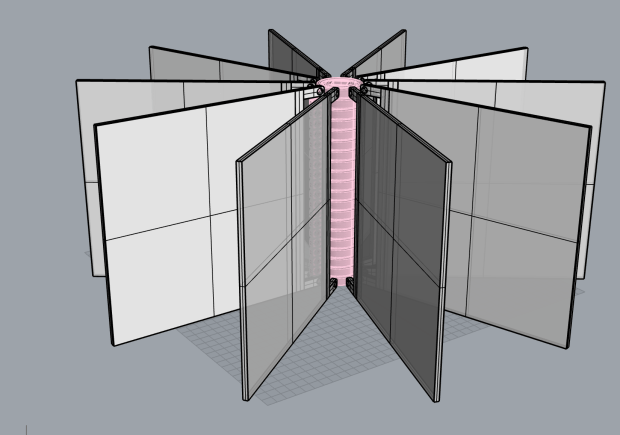
I came to Maker Media Lab with a couple of projects in mind for my short stint as artist in residence:
- Louis Sullivan 3D printed architectural reference book
- Arduino controlled 3D printer filament pigmentation device
- 3D scanning with drones
During my first week in the lab, I chose to focus on the Sullivan book project. I’m working with Chicago Cultural Historian Tim Samuelson on a 3D printed architectural reference book of Louis H. Sullivan’s early decorative ornament from buildings predominantly in the Chicago area. Tim and I have been working on this project on and off for a couple of years and it felt like the time was right to finally get moving with it.

Over the last two years Tim and I have produced twenty or so 3D scans from ornamental bricks and tiles. Initially, we scanned the pieces using both 123D Catch, Autodesk ReCap, and Skanect. Later, I borrowed an Artec Eva from the School of the Art Institute of Chicago, where I teach, and we used that to get some picture perfect scans from the bricks. We have published 2-3 of the scans so far and plan to publish the rest before the book is complete.

The depth and scale of the 3D printed scans is directly relative to the type of binding each book uses and the build volume of the 3D printer. My previous 3D printed book, Orihon, used an accordion folding technique and allowed for fairly high relief scans. Folium has a more conventional folio binding, so it was constrained to bas-relief only by the narrow spacing between each page. For the Sullivan book, Tim and I decided on using a circular book binding technique to allow for nice deep, high relief scans to be printed out.

Prior to leaving Chicago for the west coast, I printed a number of bearings from Thingiverse by PP3DP to test out my theory of a circular hinge that rotated around a central shaft. I reasoned that if each page was connected to two bearings then they could rotate around the shaft in a perpendicular fashion. I printed the first prototype at 15mm tall, but quickly realized that at that height 20 bearings (2 for each page) would make the book unwieldy.

When I arrived at Maker Media Labs, my first step was to translate PP3DP’s original bearing into CAD so I could work with it more efficiently in the Rhino environment. Then, I scaled it to 10mm tall so that the central shaft would not exceed the 220mm max length of the Dremel or Replicator 1 3D printers in the shop. Each “page” gets two bearings and they are separated from each other with a 1mm spacer. All 20 bearings and 19 spacers are placed onto a square profiled shaft 221mm tall. I know it should be 219mm, but somehow we gained 2mm in the printing process. I used two-ply corrugated cardboard for the mockup pages. I’m hoping to print some full-scale mockups this week.
I have posted all the files for the Sullivan Book Prototype and the Barbe House Sullivan scan featured on the mockup page to Thingiverse. Having completed this proof of concept prototype my next step will be to try to figure out how to create a hand cranked system to move the pages one at a time via some kind of mechanical movement. In an ideal world, the book would exist as a discrete standalone 3D printed object that can also be activated by a hand crank system.
ADVERTISEMENT






